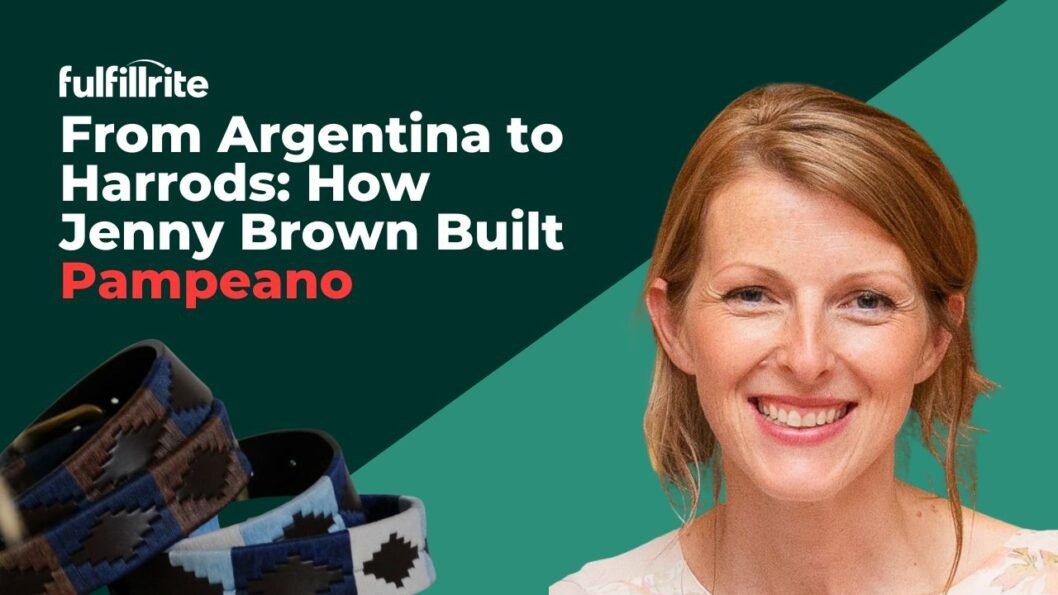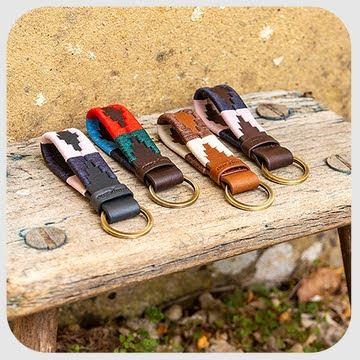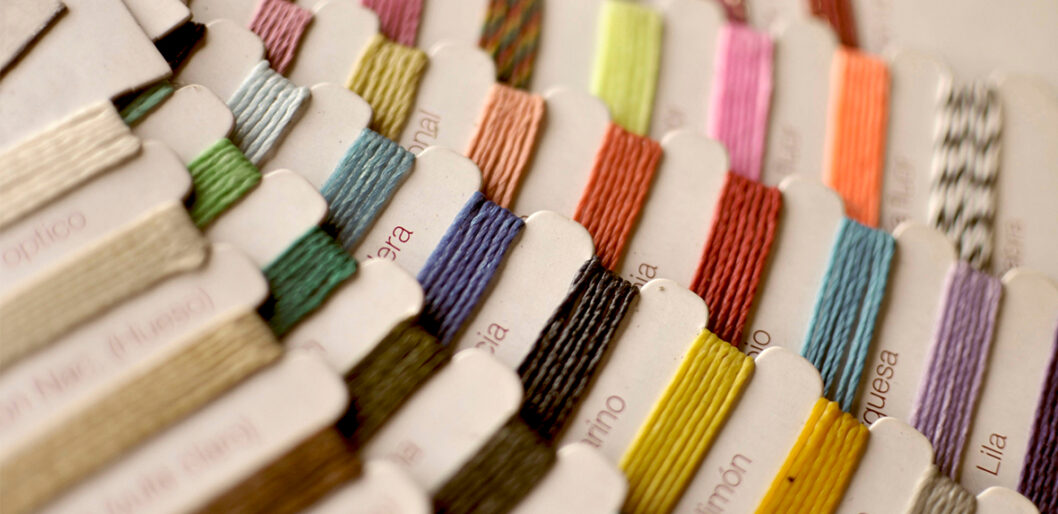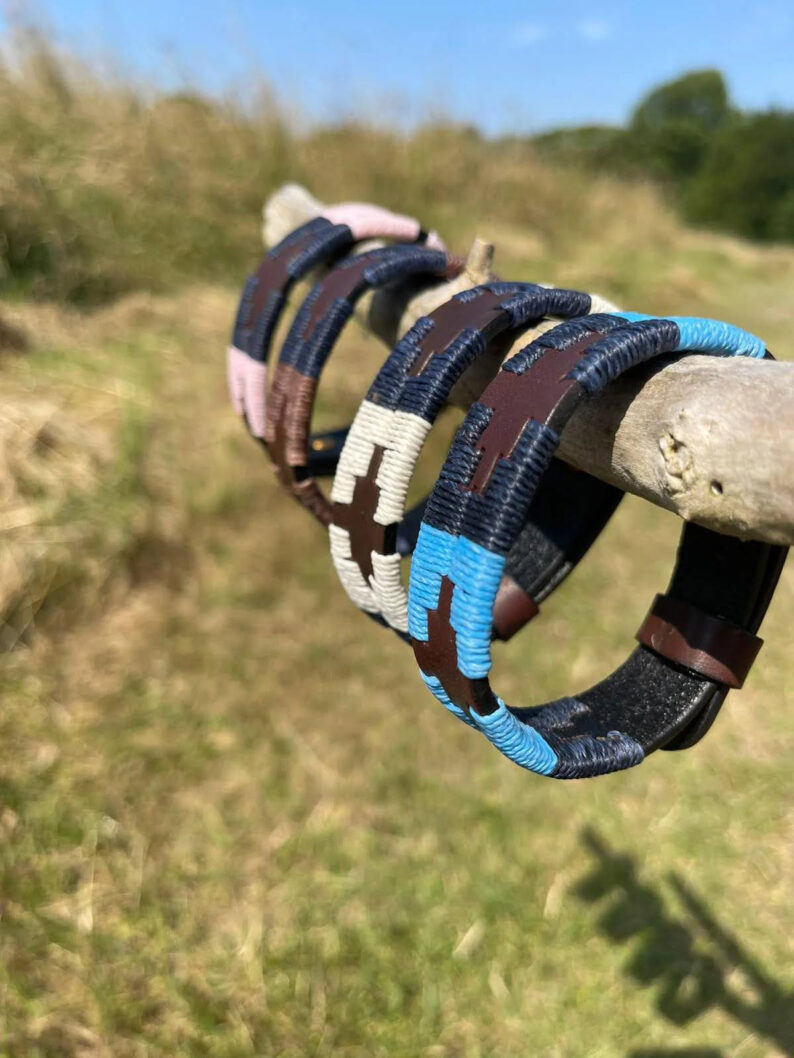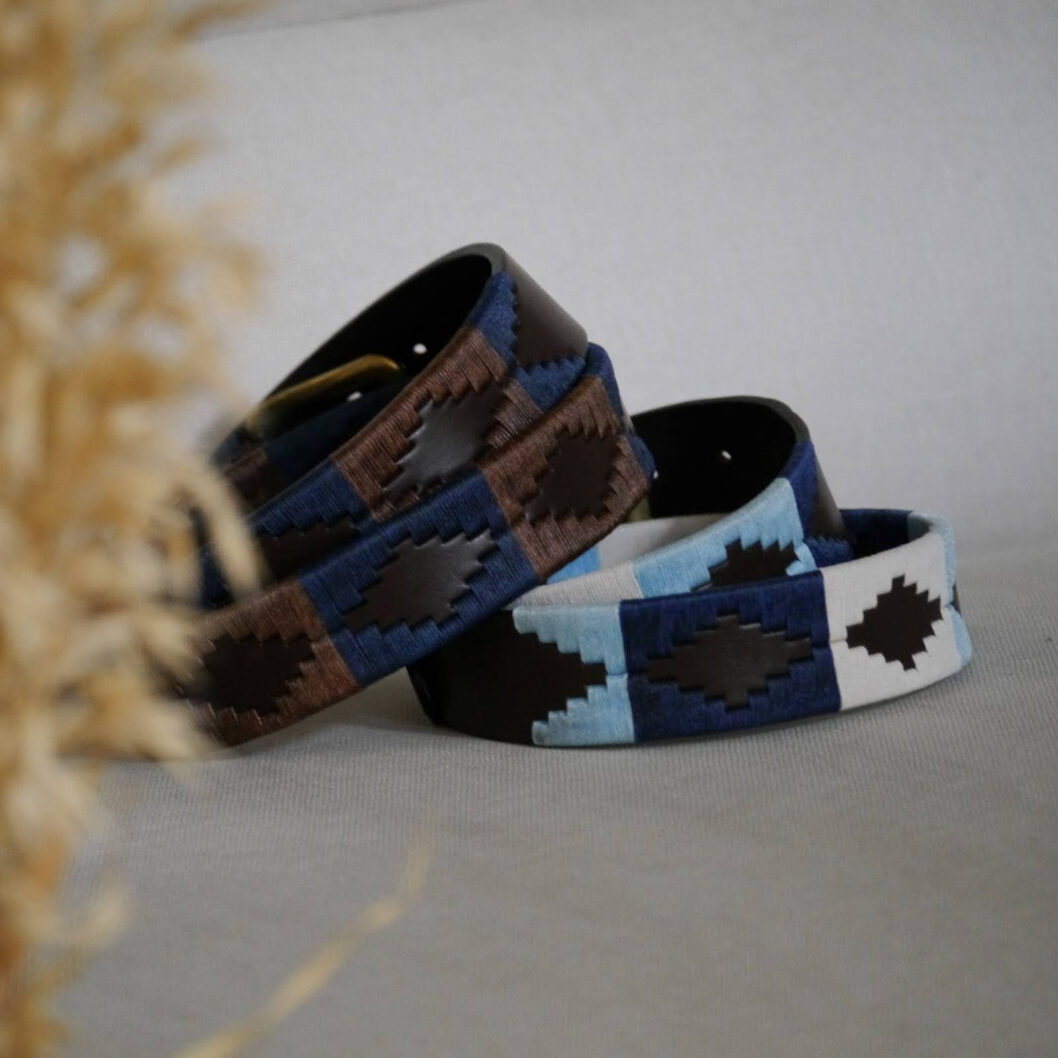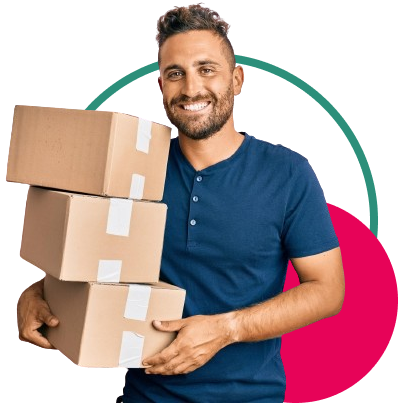Let’s say you’re a single parent. Your kids just went to bed and now it’s 7 o’clock at night. And now it’s time for you to start your workday—the one that might, eventually, pay you.
So you work until midnight. Sometimes even 1 in the morning. And you do this night after night for two and a half years without a salary.

That was Jenny Brown’s reality while building Pampeano, her luxury Argentine leather goods brand. Today, Pampeano is stocked in Harrods, John Lewis, and over 300 retailers worldwide.
The brand’s signature hand-woven belts—featuring the distinctive “pampa diamonds” design—take up to five hours each to craft in family workshops in Buenos Aires. Each belt tells the story of Argentine craftsmanship, vegetable-tanned leather, and a founder who refused to quit when things got impossibly hard.
And make no mistake: the journey from Jenny’s initial sabbatical in Argentina all the way to prestige UK retailers involved plenty of challenges along the way. Among them were expensive mistakes, brutal macro shocks like Brexit, and getting quite literally booted out of a John Lewis meeting after two minutes, as well as finding ways to build a business around bedtime stories and school pick-ups.
This is the story of how Jenny Brown turned evocative leather shops in Argentina into a brand that now serves everyone from individual customers to prestigious UK regiments and institutions.
Pampeano Started With A Sabbatical in Argentina
Jenny Brown’s career before Pampeano reads like a standard high-achiever trajectory: physics at university, finance at Goldman Sachs and Morgan Stanley, an MA in real estate, residential fund management at Grosvenor. But as she puts it, she “wasn’t a very good employee.”
After several years in the city and while caring for her then-ill father, Jenny needed a break. “I was keen to take some time out and my employers were supportive of that,” she explains. “Argentina seemed like the perfect destination—rugged landscapes, incredible culture, and a slower pace of life.”
What started as a sabbatical became something else entirely when Jenny discovered Argentina’s leather workshops.
“While there, I became aware of the outstanding quality of craftsmanship with products made in natural materials—leather, wood, silver, wool,” Jenny recalls. “I’d go into ‘talabaterias’—shops that are unlike anything I’d seen in Europe—they were the most stunning shops that visiting friends and I thought ‘wow, can we bring some of this to Europe’.”
It wasn’t just the visual appeal. It was everything. “The quality, the craftsmanship, the evocative smells (especially of vegetable tanned leather), the story behind each piece—it struck me immediately that this could translate into something much bigger and my friends encouraged me to follow the nascent idea of Pampeano.”
In 2008, Jenny made the decision to start her own business importing high-quality leather goods from South America. She soon discovered she was much more motivated working for herself than for someone else.
But motivation alone doesn’t build a business—especially one based on artisan partnerships thousands of miles away.
Building Trust With Artisans
The leather workshops Jenny found in Argentina weren’t factories. They were family operations where skills had been passed down for generations. These artisans had no interest in mass production or transactional relationships with foreign buyers.
“Trust and respect were everything,” Jenny says. “These were family workshops where skills had been passed down for generations, and they weren’t interested in mass production. I spent months living there, learning their stories, sharing meals, and showing that I valued their artistry. It became a partnership built on mutual respect rather than transactional business.”
This wasn’t a quick trip to source products and negotiate contracts. Jenny embedded herself in the community. She learned the craft, understood the time and skill involved, and proved that she wasn’t just another buyer looking to extract value.
The reality of what these artisans do is staggering. Each Pampeano belt takes up to five hours to hand-weave. Four of those hours are dedicated solely to the hand-weaving process. High-density waxed yarn is painstakingly looped around premium A-grade vegetable-tanned leather that’s been stamped into the desired pampa design.
The artisans who can do this work perfectly are among the most skilled and experienced in Argentina. It’s not a process you can rush or automate without losing the soul of the product.
The design itself became Pampeano’s signature. “The design is rooted in the landscapes I was surrounded by—the sharp silhouettes of the Andes and the infinite horizon of the pampas,” Jenny explains. “Translating that into geometric stitching felt natural, but it was only once I saw the belts lined up, all bearing this motif, that I realized we had a distinctive visual language. It gave pampeano (lower case ‘p’!) an instantly recognizable DNA.”
Those “pampa diamonds” now appear on every Pampeano product—an instantly recognizable pattern that carries the heritage of Argentine polo culture and the landscapes that inspired it.
Learning From Expensive Mistakes
Jenny is refreshingly honest about her early mistakes. When asked about the biggest ones, she doesn’t hesitate: “Oh, plenty.”
“I invested heavily in luxury travel bags at the start, which were beautiful but far too expensive to sell at scale and before we were a known brand,” she admits. “I also underestimated logistics, cash flow and the biggest of all—how long it takes to build a business.”
The luxury bags were a classic entrepreneur mistake: building what you think is impressive rather than what customers will actually buy at scale. Beautiful doesn’t always mean viable, especially when you’re an unknown brand trying to establish yourself.
Then came the macro shocks, those awful events completely outside Jenny’s control that threatened the entire business.
“Macro shocks (the UK referendum in 2016, Covid, Truss budget in 2022) really hurt notably for the collapse in GBP,” Jenny explains. “Getting through those periods was tough!”
When you’re importing products priced in dollars and selling them in pounds, currency fluctuations aren’t abstract economic theory. They’re existential threats.
The pivot from bags to belts was “partly necessity, partly listening.”
“Friends and customers loved the belts—they were more affordable, easier to gift, and carried the essence of the brand,” Jenny says. “Switching focus allowed us to build awareness quickly without the financial risk of large inventory. Belts became our foundation, and from there, we expanded sustainably.”
It was the right strategic move, but it didn’t make the early years any easier financially.
For two and a half years, Jenny didn’t pay herself a salary.
“It was tough. I lived frugally, leaned on savings, and honestly just had a lot of grit,” she recalls. “What kept me going was the belief in the brand and the encouragement of people around me who saw its potential. I treated every small win—like our first stockist—as fuel to keep going.”
Those mistakes taught her critical lessons: “to listen to customers, test ideas small before going big, and be pragmatic rather than romantic about the business.”
That pragmatism would prove essential for what came next.
Single Parenthood & Going To Bed at 1 in the Morning
Building a business is hard. Building a business as a single parent is something else entirely.
“It was survival mode, really,” Jenny says. “I built systems out of necessity—delegating what I could, automating where possible, and carving out strict routines.”
The routine looked like this: handle what she could during the day, be present for her kids, and then start the real work after bedtime.
“Sometimes it meant taking calls at school pick-up (I really tried to avoid this) but most typically working late nights after bedtime,” Jenny explains. “I’d start work again at 7pm when they were little, and would work until 11-12-1am very typically.”
That’s not hyperbole or exaggeration. That was the actual schedule, night after night, for years.
But there was one non-negotiable: “Bedtime mattered most—cuddles and stories!”
No matter how urgent the business demands, Jenny protected that time. The work could wait until 7pm. Bedtime was sacred.
Her advice for other single parents or mothers considering entrepreneurship cuts through the noise of “having it all” mythology:
“Don’t buy into the myth that you have to ‘do it all.’ You can’t—and that’s okay. Focus on what only you can do, build support systems around you, and be kind to yourself. Progress doesn’t have to be perfect to be meaningful and slow is natural. You’re not going to build something sustainable overnight.”
That last line is key: “slow is natural.” The pressure to scale fast, grow quickly, and hit arbitrary milestones ignores the reality that sustainable businesses take time—especially when you’re building them around school pick-ups and bedtime.
Surviving Brexit
If two and a half years without pay while working until 1am wasn’t hard enough, then came Brexit.
“It was brutal,” Jenny says. “Overnight, our costs shot up because everything we bought was in dollars. We had to renegotiate contracts, tighten expenses, and hedge currency risk where possible. It forced us to become sharper financially and to diversify markets more aggressively.”
When the pound collapsed, Pampeano’s costs didn’t just increase—they skyrocketed. Everything was purchased in dollars from Argentina. Everything was sold in pounds in the UK. The exchange rate shift meant margins disappeared overnight.
Sales in Europe halved.
The response? Open a warehouse in Holland.
“It wasn’t so much a choice as survival,” Jenny explains. “If we wanted to keep serving European customers without endless delays and tariffs, we had to be on the continent. Was it scary? Yes. But it ended up being a strategic move that not only solved logistics but also gave us a stronger foothold in the EU market.”
Opening a warehouse in another country when your sales have just halved takes either desperation or strategic vision. In Jenny’s case, it was probably both.
But that investment paid off. The Holland warehouse solved the immediate logistics problem while positioning Pampeano for long-term growth in the European market.
Breaking Into Harrods
Getting luxury products into prestige retailers like Harrods and John Lewis isn’t about luck. It’s about persistence, presentation, and sometimes getting a second chance after spectacular failure.
“Persistence and presentation,” Jenny says. “We made sure our story and craftsmanship were impeccable, and we knocked on doors until someone listened. With big retailers, you often only get one chance, so we came prepared.”
Except when you don’t get it right the first time.
“Actually when I first met John Lewis in approx 2011, I got it spectacularly wrong; we were booted out after 2 minutes!” Jenny admits. “We did get a meeting again about 4 years later and nailed it!”
Think about that. Getting kicked out of a meeting after 120 seconds. Most entrepreneurs would take that as a definitive rejection and move on. Jenny waited four years, got another meeting, and this time came prepared.
Today, Pampeano is stocked across John Lewis stores and featured in their Christmas gift guides. That 2-minute disaster became a long-term retail partnership.
But Jenny’s careful to balance prestige stores with smaller retailers.
“At the same time, I’ve always been careful to balance prestige stores with small boutiques—they’re the soul of our business and give us reach and authenticity,” she explains.
The big department stores provide credibility and volume. The small boutiques provide community, authenticity, and the personal relationships that keep a brand grounded.
And then there’s the B2B business, which is something that emerged organically from customer requests.
“It started with a single request—a school asking if we could weave their colors into belts,” Jenny recalls. “Word spread, and suddenly we were making pieces for regiments, clubs, and institutions. Today, it’s a significant slice of the business, and we provide belts for some of the most prestigious UK institutions. It’s incredibly rewarding because those belts carry real meaning for the groups who commission them.”
What began as a one-off custom order turned into an entire revenue stream. Schools, military regiments, clubs, institutions—all wanting belts woven with their specific colors and identity. Each piece carries genuine meaning for the organization that commissions it.
That’s the kind of business you can’t manufacture through strategy documents. It comes from listening to what customers ask for and being willing to say yes to opportunities that don’t fit the original business plan.
Switching From .co.uk to .com
For a brand building international recognition, having a .co.uk domain was limiting. Jenny wanted pampeano.com—the obvious choice for a global brand.
“It was about legitimacy and global reach,” she explains. “A .co.uk [domain] felt limiting, especially as we grew internationally. The negotiations were long and frustrating (on and off over 10 years to agree a sensible price!), but owning pampeano.com was worth it. It gave us credibility and a digital home that matched our ambition.”
Ten years. On and off negotiations for a decade to acquire the domain name that should have been hers from the start.
But she got it. And she’s right—it mattered. A .com signals global presence in a way that country-specific domains don’t. For a brand with aspirations beyond the UK market, it was essential.
Convincing Customers to Pay Premium Costs
When you’re selling belts that take five hours to hand-weave and cost significantly more than mass-produced alternatives, you have to educate customers about why they should care.
“Storytelling is key,” Jenny says. “We explain that each belt takes up to five hours to hand-weave, that the leather is vegetable-tanned, and that no two are ever quite the same. When customers understand the time, skill, and heritage involved, they see the value. It’s about shifting the mindset from disposable fashion to lasting investment.”
The challenge is competing against a culture of fast fashion where belts are disposable accessories, not investment pieces.
“We get copied a lot but the quality and authenticity are unmatchable,” Jenny notes.
Imitation is inevitable when you create something distinctive. But the copies can’t replicate the five hours of hand-weaving, the relationships with family workshops in Argentina, the vegetable-tanned leather, or the heritage behind each piece.
When customers understand what they’re actually buying—not just a belt, but a piece of Argentine craftsmanship that will develop character over time—they’re willing to invest in quality over quantity.
Final Thoughts
Jenny’s journey with Pampeano continues, though not exactly as she’d planned.
“I haven’t stepped back; I had an MD in place but it didn’t work out unfortunately,” she says. “I’m back at the helm and loving it.”
Sometimes the attempt to step back and delegate reveals that the founder’s involvement is still essential. Jenny’s back running the business full-time—and she’s embracing it.
Today, Pampeano is distributed through over 300 retailers worldwide. The brand is stocked in Harrods, John Lewis, and prestige boutiques across the UK and Europe. The B2B business serves schools, regiments, clubs, and institutions with custom-woven belts that carry genuine meaning.
Theclassic leather belts featuring the signature pampa diamonds remain the foundation, but the product line has expanded to include dog collars and leads, bags, and accessories. All the while maintaining the same commitment to Argentine craftsmanship and hand-weaving.
The brand DNA remains unchanged: distinctive design rooted in Argentine landscapes, vegetable-tanned leather, artisan partnerships built on respect and trust, and products that take hours to craft rather than minutes to manufacture.
After 15+ years of late nights, macro shocks, currency collapses, and persistence, Jenny has built something that matters—a brand that honors traditional craftsmanship while serving modern customers who value quality and heritage.
You can explore their full collection at pampeano.com.
Key Takeaways
Did you read this piece looking for tips on how to grow your own business? Here are some things that stood out to me.
Start small, test before scaling.
Jenny’s most expensive mistake was investing in luxury bags before building brand awareness. Belts were more affordable, easier to send as gifts, and let her build the business at a sustainable pace. So it’s a good idea to test ideas small before committing big resources to unproven concepts.
Artisan partnerships require time and respect.
Spending months in Argentina, sharing meals, and learning stories were all forms of investment. Those relationships created partnerships that have lasted decades, and went beyond simple transactional vendor relationships. Trust takes time to build, especially across cultures and industries.
Macro shocks will happen, which is why you need to build resilience.
Brexit, COVID, and currency collapses all happened while Jenny was running Pampeo. You can’t predict them, but you can become sharper financially, diversify markets, and make strategic moves like opening a warehouse in Holland when circumstances demand it.
Second chances exist if you show up prepared.
Getting booted out of John Lewis after 2 minutes didn’t end the relationship. Coming back four years later and nailing it proved that persistence and preparation matter more than one bad meeting.
Progress doesn’t have to be perfect.
Two and a half years without pay, working until 1am, building slowly while managing single parenthood is the reality of bootstrapping. Slow is natural and sustainable, despite what startup culture suggests.
Storytelling justifies premium pricing.
When customers understand that each belt takes five hours to hand-weave with vegetable-tanned leather from family workshops in Argentina, they see value beyond price tags. Education transforms price resistance into appreciation for craftsmanship.
B2B can emerge from B2C.
One school request for custom colors turned into a significant business serving prestigious UK institutions. Listen to what customers ask for. Sometimes they’re showing you new revenue streams you never planned for.
Protect what matters to you most.
No matter how urgent the business demands Jenny was facing, bedtime stories were non-negotiable. The work could wait until 7pm. Building a sustainable business means protecting the things and people that keep you grounded and motivated.
